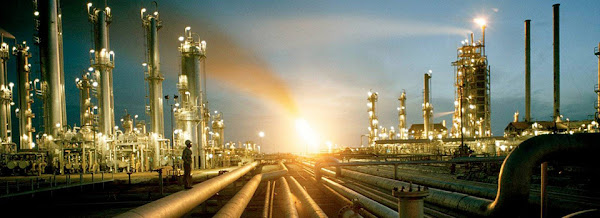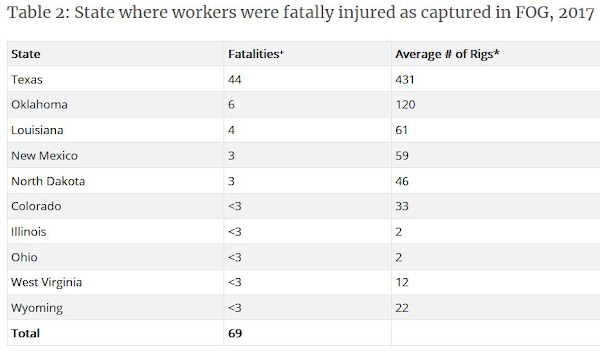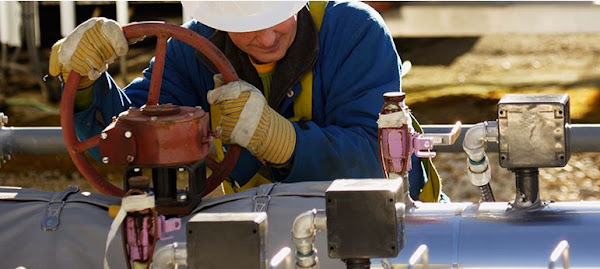The oil and gas industry is one of the most dangerous jobs in the United States. Oilfield injury claims have increased as the demand for oil has increased. Crews are forced to work harder and faster, and often the proper safety measures are not in place. The oil and gas industry is a highly lucrative business that attracts hundreds of thousands of potential employees a year. There is a promise of hefty salaries with very little to no experience or training necessary. Oilfield injuries are extremely common.
Miller Weisbrod's experienced oilfield accident attorneys have handled all types of cases, involving:
- Pipeline explosions
- Electrocutions
- Dangerous Gases
- Equipment failures and collapse
- Improper Training
Fatal Oilfield Accidents
According to the Centers for Disease Control and Prevention, out of the 876 active rigs, a total of 69 fatal work injuries occurred in the oil and gas extraction industry in 2017. The three most frequent fatal events were transportation incidents (42 percent), contact with objects and equipment (24 percent), and fires & explosions (14 percent). Texas leads all states in fatal oil and gas incidents with 44.
Nonfatal Work Injuries
Oil industry workers often feel pressure to sacrifice safety for productivity. There are no clear training protocols when operating heavy machinery or navigating elevated rig decking. Workers also have to handle hazardous materials and often do not receive very much training to prepare for the dangerous affects.
Little to no training leads to dangerous situations. The most common type of oil rig injury is when a falling object strikes a worker, often from collapsing decking or work rigs. The next most common accident is workers getting caught in malfunctioning equipment, or sustaining a crush injury.
- Finger or fingertip amputation
- Bone fractures
- Traumatic brain injuries
- Puncture wounds and lacerations
- Burns, including chemical burns
- Hearing loss
- Vision loss
Dangerous Oilfield Gases
Oilfield injuries, like burns and chronic illnesses are less common. This is due to the likelihood that oilfield workers will need to handle a variety of hazardous materials, such as hydrogen sulfide gas. These gases are often highly combustible. Fires and explosions are more common. Oilfield workers are also subject to materials like airborne silica and diesel particulate matter. These materials are harmful to the skin, eyes, and lungs. If oilfield workers neglect the proper safety equipment when working with these chemicals, illnesses, burns, and even death can result.
Opening “thief” hatches of storage tanks can lead to the rapid release of high concentrations of hydrocarbon gases and vapors. Those may result in very low oxygen levels and toxic and flammable conditions around and over the hatch. Recent reports have documented fires or explosions, and described workers experiencing dizziness, fainting, headache, nausea, and, in some cases, death while gauging tanks, collecting samples, or transferring fluids. Tank gauging, thieving, and fluid handling can be performed safely with proper precautions.
The Fast-Paced Oil Industry
The high demands of the oil industry push its employees to the very brink of their productivity. To meet these demands, workers may cut corners in order to increase productivity. Cutting corners is common on an oil rig. To complete tasks on time, workers may ignore safety procedures or proper safety equipment.
Inadequate Training
The oil industry draws many employees due to the high wages combined with the lack of training needed. Oil rig work actually requires a significant amount of training. Oilfield workers are responsible for an abundance of heavy machinery. If management does not maintain this equipment, or if the operator does not have proper training, this becomes dangerous. Many oil rig injuries result from malfunctioning or broken equipment.
Oil and Gas Industry Injuries and OSHA
The Occupational Safety and Health Administration (OSHA) collects information on oil rig injuries from many major oil and gas companies in the United States. Since 2015, OSHA requires oil and gas companies to report all severe injuries.
Before 2015, OSHA only required companies to report fatalities or catastrophic accidents that hospitalized more than 3 employees. OSHA uses this data to manage and evaluate oil rig injuries and implement better safety procedures. OSHA’s data is incomplete, as 21 states are exempt from reporting. This includes many states with huge oil and gas industries. Despite this incomplete data, OSHA makes it clear that the oil and gas industry’s high injury rate is due to the many safety hazards of the job and the lack of training against them.
Lack of Safeguards
Training is not the only safety measure available to oilfield workers. Safety equipment is also important, and though some safety equipment is present, it isn’t always adequate. For example, oil rig workers wear hard hats. In case of a fall, or a heavy piece of falling equipment, or an explosion, hard hats aren’t adequate. Because of this, traumatic brain injuries are common.
Under the Occupational Safety and Health Act of 1970, employers shall furnish to each employees employment and a place of employment which are free from recognized hazards that are causing or are likely to cause death or serious physical harm to his employees.
To counteract these types of injuries, OSHA recommends the active monitoring of chemicals and equipment. OSHA also recommends proper head, eye, face, and respiratory protection. OSHA also recommends that oil rigs implement regular inspection of equipment. They should also have comprehensive maintenance plans. This includes utilizing safety control devices like tripwires, two-handed controls, and barriers such as gates and protective shields.
OSHA Regulation 1910.132(a) Protective equipment, including personal protective equipment for eyes, face, head, and extremities, protective clothing, respiratory devices, and protective shields and barriers, shall be provided, used, and maintained in a sanitary and reliable condition wherever it is necessary by reason of hazards of processes or environment, chemical hazards, radiological hazards, or mechanical irritants encountered in a manner capable of causing injury or impairment in the function of any part of the body through absorption, inhalation or physical contact.
Contact Miller Weisbrod
We understand that many oilfield injuries involve permanent damage that may impair your ability to ever work the same way again. We will make sure to include lost wages, future lost earnings, pain and suffering and all medical claims in our settlement demands. Miller Weisbrod's experienced Oilfield Injury Attorneys are prepared to take your case to court as well.
If you have suffered an oilfield injury or a loved one died in an oilfield accident, please contact our offices today at 214.987.0005 or toll free at 888.987.0005 for a free consultation. You may also contact us through the form on this page for answers to your important questions or to schedule an appointment.











0 comments:
Post a Comment
Note: Only a member of this blog may post a comment.